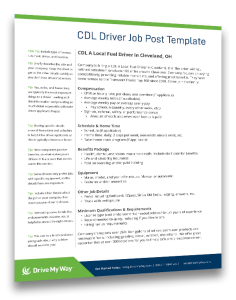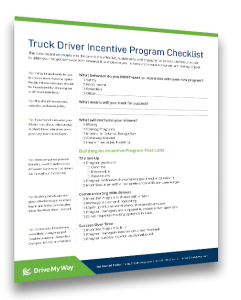
Transporting building materials is a critical component of the construction supply chain. From lumber and drywall to concrete, steel, and glass, these materials are essential, but their transportation presents a unique set of logistical challenges.
These products are often bulky, heavy, and sometimes fragile, requiring specialized handling and careful planning.
For any carrier or owner-operator that facilitates the transportation of building materials, understanding and addressing these challenges is key to ensuring safe, timely, and cost-effective delivery.
Bulky and Heavy Loads Require Specialized Equipment
One of the most immediate challenges in hauling building materials is their sheer size and weight. Oversized items like steel beams or precast concrete panels may exceed standard trailer dimensions or weight limits, requiring flatbeds, step decks, or even extendable trailers.
These loads may also need permits for oversized transport and escorts depending on their dimensions and routes.
What to do:
- Invest in a diverse fleet that includes flatbeds and heavy-haul trailers.
- Train dispatch and logistics teams on how to secure the necessary permits and route approvals. Make sure communication between dispatch, drivers, and management is streamlined, because miscommunication can lead to costly delays, missed permit requirements, or routing errors that may result in fines, delivery disruptions, or even load rejections at the job site.
- Ensure drivers are trained in load securement, especially for irregularly shaped cargo.
Fragility and Risk of Damage
While some building materials are heavy and durable, others, such as glass, tiles, or insulation, are fragile and require careful handling. The risk of damage increases during loading, unloading, or when traveling over rough terrain.
What to do:
- Use padding, secure strapping, and edge protection.
- Partner with shippers to establish clear handling protocols.
- Ensure all drivers and loading teams are trained in fragile material transport.
Weight Restrictions and Regulatory Compliance
Building materials often push the upper limits of weight restrictions. Federal and state laws strictly regulate gross vehicle weight, axle weight, and load distribution to prevent road damage and ensure safety.
Proactively calculating and verifying weight ahead of time helps avoid costly overweight fines, delays at weigh stations, or the need to reload shipments. Taking these steps early in the process keeps deliveries on schedule and helps maintain a company’s reputation for reliability and compliance.
What to do:
- Conduct detailed weight assessments before loading.
- Use weigh stations or onboard scales to prevent overweight violations.
- Stay up to date on state-by-state regulations, especially when crossing state lines.
Tight Delivery Schedules and Coordination with Construction Sites
Construction projects operate on strict timelines. Delivering too early can mean materials sit unused and exposed; too late, and projects get delayed. Additionally, many job sites have narrow access roads, limited unloading space, or require specific drop-off windows.
What to do:
- Implement advanced route planning and scheduling tools. Consider investing in new technologies to optimize your route planning process.
- Maintain strong communication with contractors and site managers.
- Use GPS tracking and ETA updates to ensure accurate arrival times. Be sure to update both drivers and contractors of any potential delays or changes in delivery time.
Adverse Road Conditions and Remote Locations
Many construction projects are in areas that are still being developed or are far from major transportation routes. These remote job sites often present serious challenges: unpaved or poorly maintained access roads, tight turns, low-clearance bridges, weight-restricted roads, or even no formal road access at all.
These conditions can lead to delays, increased vehicle wear and tear and even failed deliveries if not addressed properly in advance.
What to do:
- Equip trucks with durable tires and off-road capabilities when necessary. Some deliveries may require off-road-capable trucks, lighter vehicles for bridge compliance, or even equipment like forklifts or cranes to handle unloading due to a lack of paved surfaces or dock access.
- These locations often require slower driving speeds or alternate routes, so standard transit times may not apply. Build in time buffers to account for delays caused by terrain or road conditions without disrupting the delivery schedule.
- Coordinate in advance with site personnel to assess the best delivery paths and unloading areas. Drivers should then be briefed on specific challenges they might encounter en route and on-site.
Weather-Related Challenges
Rain, snow, wind, or extreme heat can all impact the transportation of building materials. All drivers should be trained and prepared for driving in adverse conditions year round, but those who transport building materials should be especially aware of the impact weather-related challenges can have.
Materials like lumber or drywall can be damaged by moisture, while icy or muddy roads can make access to already-challenging job sites more dangerous.
What to do:
- For moisture-sensitive materials like lumber, drywall, or insulation, use heavy-duty waterproof tarps rated for highway speeds and secure them tightly with bungee cords or ratchet straps to prevent flapping or tearing.
- For high-value or highly fragile materials, such as glass or engineered wood products, consider using enclosed trailers or curtain-side trailers to provide full protection from rain, snow, and road debris.
- Assign dispatch teams to use tools like the National Weather Service, Weather Underground, or transportation-specific apps like Drivewyze to track storms along planned routes. If a storm is forecasted to hit a delivery area, proactively reschedule with the job site or shift departure times to avoid peak weather events while still meeting project deadlines.
By understanding the unique logistics of building material transport, carriers can minimize risk, reduce delays, and build long-lasting relationships with contractors, suppliers, and builders.
Drive My Way addresses your unique challenges and secures skilled hires for your construction and building materials operations. Schedule a call today to learn more!


 While every box truck owner operator will be different, there are a few common traits that you can expect. Like most CDL owner operators, box truck owner operators are likely to be independent. Many became owner operators to be their own boss. Similarly, you can expect box truck owner operators to be business savvy. Even the newest owner operators must quickly learn the ropes if they want to stay afloat. Once you have a distinct driver persona, use your
While every box truck owner operator will be different, there are a few common traits that you can expect. Like most CDL owner operators, box truck owner operators are likely to be independent. Many became owner operators to be their own boss. Similarly, you can expect box truck owner operators to be business savvy. Even the newest owner operators must quickly learn the ropes if they want to stay afloat. Once you have a distinct driver persona, use your 

 With thousands of carriers advertising jobs for truck drivers right now, how do you make sure yours resonates? If you’re recruiting for a smaller carrier, this can be even harder, since you may still be developing brand recognition. That’s not to say that creating a great job advertisement is an impossible task. It can seem daunting, but there are a few simple tips you can use to make sure your ads are getting noticed by the drivers you’re looking for.
With thousands of carriers advertising jobs for truck drivers right now, how do you make sure yours resonates? If you’re recruiting for a smaller carrier, this can be even harder, since you may still be developing brand recognition. That’s not to say that creating a great job advertisement is an impossible task. It can seem daunting, but there are a few simple tips you can use to make sure your ads are getting noticed by the drivers you’re looking for. 







 This is essential. When drivers look at your job description, they want to know exactly what you are offering. No surprises later on. As an employer, it can be intimidating to clearly note every critical part of your job offering, but transparency and specificity are key. Whether you’re a big or
This is essential. When drivers look at your job description, they want to know exactly what you are offering. No surprises later on. As an employer, it can be intimidating to clearly note every critical part of your job offering, but transparency and specificity are key. Whether you’re a big or 




